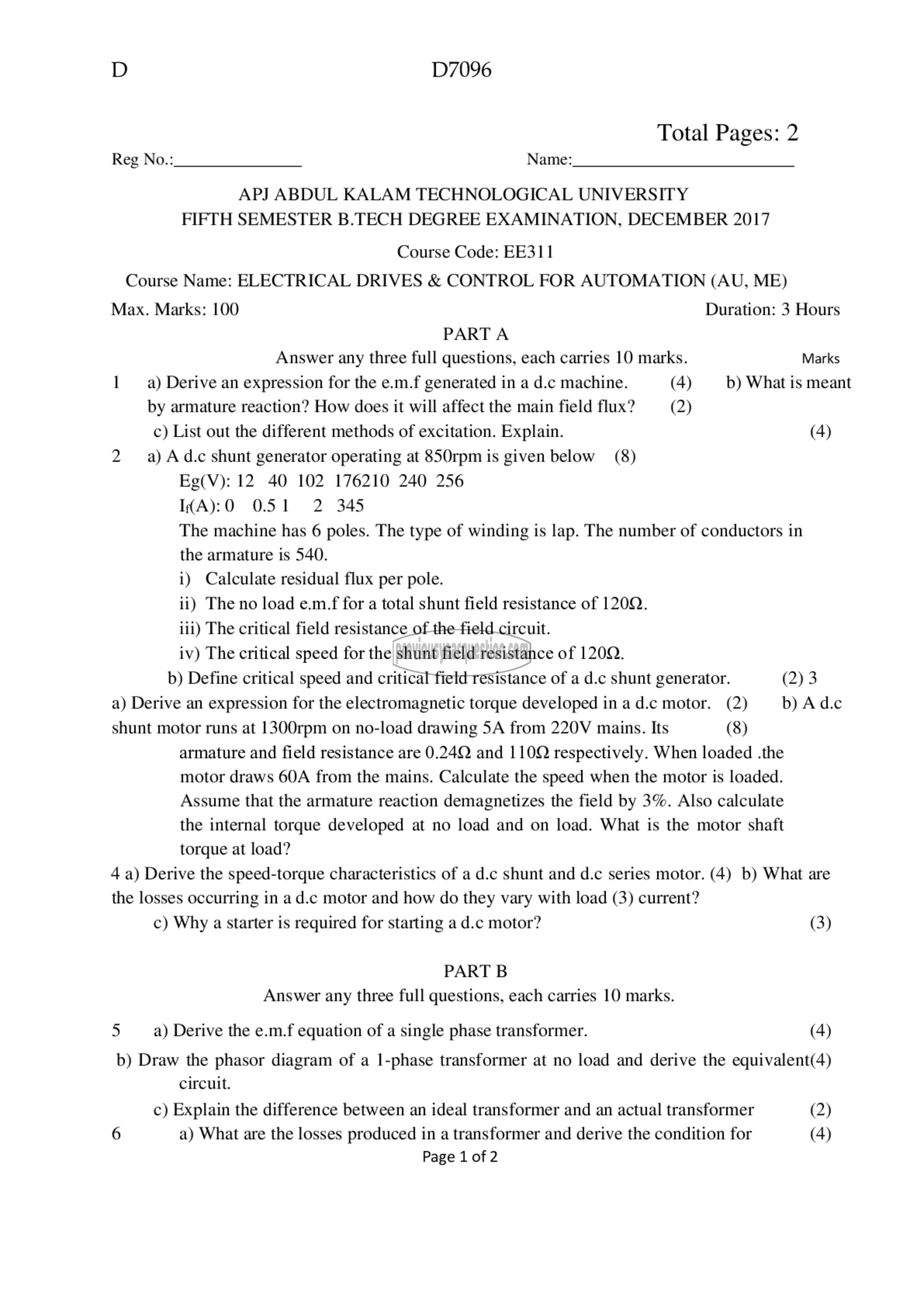APJ ABDUL KALAM TECHNOLOGICAL UNIVERSITY Previous Years Question Paper & Answer
Semester : SEMESTER 5
Year : 2017
Term : DECEMBER
Branch : MECHANICAL ENGINEERING
Scheme : 2015 Full Time
Course Code : EE 311
Page:1
D D7096
Total Pages: 2
Reg No.: Name:
APJ ABDUL KALAM TECHNOLOGICAL UNIVERSITY
FIFTH SEMESTER B.TECH DEGREE EXAMINATION, DECEMBER 2017
Course Code: EE311
Course Name: ELECTRICAL DRIVES & CONTROL FOR AUTOMATION (AU, ME)
Max. Marks: 100 Duration: 3 Hours
PART A
Answer any three full questions, each carries 10 marks. Marks
1 98) Derive an expression for the e.m.f generated in a d.c machine. (4) b) What is meant
by armature reaction? How does it will affect the main field flux? (2)
c) List out the different methods of excitation. Explain. (4)
2 9) ^ १.८ shunt generator operating at 850rpm is given below (8)
Eg(V): 12 40 102 176210 240 256
1():0 0.51 2 345
The machine has 6 poles. The type of winding is lap. The number of conductors in
the armature is 540.
i) Calculate residual flux per pole.
11) The no load e.m-f for a total shunt field resistance of 120Q.
iii) The critical field resistance of the field circuit.
iv) The critical speed for the shunt field resistance of 120Q.
b) Define critical speed and critical field resistance of a d.c shunt generator. (2)3
a) Derive an expression for the electromagnetic torque developed in 8 0.൦ motor. (2) b) A 0.൦
shunt motor runs at 1300rpm on no-load drawing 5A from 220V mains. Its (8)
armature and field resistance are 0.24Q and 110Q respectively. When loaded .the
motor draws 60A from the mains. Calculate the speed when the motor is loaded.
Assume that the armature reaction demagnetizes the field by 3%. Also calculate
the internal torque developed at no load and on load. What is the motor shaft
torque at load?
4 a) Derive the speed-torque characteristics of a d.c shunt and d.c series motor. (4) b) What are
the losses occurring in a d.c motor and how do they vary with load (3) current?
c) Why a starter is required for starting a d.c motor? (3)
PART B
Answer any three full questions, each carries 10 marks.
2 a) Derive the e.m.f equation of a single phase transformer. (4)
b) Draw the phasor diagram of a |-phase transformer at no load and derive the equivalent(4)
circuit.
c) Explain the difference between an ideal transformer and an actual transformer (2)
6 a) What are the losses produced in a transformer and derive the condition for (4)
Page 1 of 2
